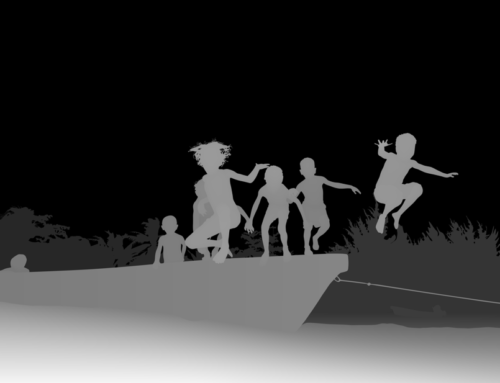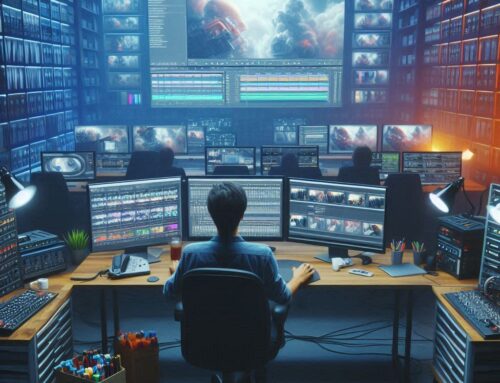The Complete Guide to Post-Production Management

In the world of film and television, post-production is a critical phase that ensures the final product is polished and ready for audiences. This comprehensive guide will introduce you to the various roles within post-production management, from supervisors to assistants, each playing a crucial part in bringing a project to completion.
Post-Production Management
Post-Production Supervisor
The post-production supervisor is essential for managing both creative and financial processes. They work closely with the producer to ensure the edit process stays on schedule and within budget. Responsibilities include:
– Creating a post-production schedule.
– Hiring and managing edit staff.
– Tracking workflow and budget.
– Coordinating with sound, editing, and VFX teams to ensure all elements come together seamlessly.
Post-Production Runner
A post-production runner assists everyone in the office or studio with various tasks. They are efficient communicators, great at problem-solving, and ensure that the environment runs smoothly. Duties include:
– Handling ad hoc problem-solving and administrative tasks.
– Making sure there are refreshments for staff and crew.
– Sometimes working on reception, answering phones, and welcoming guests.
Edit Suite
Picture Editor
The picture editor works closely with the director or producer to select the best shots and arrange them in the correct order to tell a compelling story. Key skills include:
– Technical editing proficiency.
– Creative narrative structuring.
– Working on diverse projects ranging from short advertisements to feature films.
Edit Producer
An edit producer collaborates with the editor to create a program from raw footage, or ‘rushes.’ They:
– Organize and edit footage to create concise episodes or features.
– Manage pre-prepared films for live studio programs or outside broadcasts.
– Oversee the style and narrative across series if experienced.
Edit Assistant
Edit assistants support picture editors by organizing and preparing footage for editing. They:
– Process and format digital files.
– Transfer archive footage and music.
– Maintain the editing suite and assist with daily tasks.
Archive Producer
Archive producers source and negotiate rates for archive footage. They look for:
– News footage, film clips, commercials, music clips, or published text.
– Anything that will add context or illustrate a point in a drama or documentary.
Graphics
Motion Graphic Designer
Motion graphic designers create all the graphics for films, TV programs, and commercials. Their responsibilities include:
– Producing opening sequences, captions, titles, and logos.
– Creating a consistent visual identity that supports the tone of the program.
– Influencing the visual aspects of production, social media, and branding.
Visual Effects (VFX) Suite
Rotoscoping Artist (Roto)

Rotoscoping artists meticulously trace over footage to create masks and mattes for VFX compositing. They:
– Isolate elements within the footage to be manipulated or replaced.
– Ensure smooth edges and accurate motion for realistic integration with other visual elements.
Tracking Artist
Tracking artists ensure that visual effects elements move seamlessly with the footage. They:
– Track and match the movement of the camera and objects within the shot.
– Provide data that allows VFX elements to stay aligned with the live-action footage.
Compositing Artist (Comp)
Compositing artists combine various visual elements into a single cohesive shot. They:
– Integrate CGI, live-action footage, matte paintings, and other elements.
– Ensure the final composition looks realistic and seamless.
Grade and Online Suite
Colorist
Colorists define the look and mood of a film or TV show through color grading. They:
– Work with the director and director of photography to choose a color palette.
– Influence the style and tone of the final production.
Grading Assistant
Grading assistants support colorists by:
– Preparing and loading files for grading.
– Ensuring everything is ready and free of technical errors.
Online Editor
Online editors polish the edits to create the final version of the production. They:
– Conform images to the highest resolution.
– Format files and clean up images post-picture lock.
Subtitling
Subtitler
Subtitlers provide written versions of dialogue and sound on screen. They:
– Translate dialogue into different languages.
– Create captions for the deaf and hard of hearing, describing dialogue, music, and sound effects.
Central Technical Area
Tech Ops Supervisor
Tech ops supervisors ensure technical facilities run smoothly. They:
– Manage technical equipment in editing rooms, dubbing theatres, and grading suites.
– Ensure all technology is up-to-date and functional.
Deliverables Producer
Deliverables producers are responsible for delivering completed films or TV programs in the correct formats. They:
– Encode video and audio files.
– Ensure assets are tested and delivered on time and within budget.
Post-production management is a complex and integral part of filmmaking and television production. Each role contributes to the seamless completion and delivery of the final product, ensuring that the audience experiences the best possible version of the project.



